Mecanizado CNC es popular por su función de automatización. No sólo acelera la velocidad.. Pero también promueve una alta precisión y exactitud.. aparte de esto, se utiliza en muchas aplicaciones en muchas industrias. Entonces, cuando hablamos de mecanizado CNC y sus productos de salida. También consideramos los materiales que utilizamos para el proceso de mecanizado CNC.. En este articulo, Exploraremos los diferentes materiales ideales para el mecanizado CNC, Los factores a considerar al seleccionar materiales, y consejos para optimizar las opciones de materiales para sus proyectos.
Diferentes categorías de material en mecanizado CNC
El mecanizado CNC es un proceso versátil capaz de trabajar con una amplia gama de materiales. Mientras que el metal y el plástico son los materiales más utilizados, El mecanizado CNC también puede acomodar materiales como la cerámica, madera, y materiales compuestos. Cada categoría de material tiene ventajas y desafíos distintos, que hacen que sea importante elegir el correcto dependiendo de la aplicación.
Categorías de Materiales de mecanizado CNC:
- Rieles- comúnmente utilizado en industrias como aeroespacial, automotor, y dispositivos médicos debido a su durabilidad y fuerza.
- Plástica- Popular en los bienes de consumo y las industrias médicas, Donde liviano, Se necesitan partes resistentes a la corrosión.
- Composicion- Utilizado en industrias especializadas como la fabricación de equipos aeroespaciales y deportivos, ofreciendo altas proporciones de fuerza / peso.
- Madera y cerámica-Utilizado para producción especializada y de bajo volumen, típicamente para productos artísticos o únicos.
Tipos de materiales metálicos para mecanizado y ejemplos de CNC
Los metales son el material de referencia para la mayoría de las operaciones de mecanizado CNC debido a su resistencia, resistencia al calor, y capacidad para soportar cargas pesadas. Abajo, Exploramos los metales más utilizados en el mecanizado CNC.
Aluminio
El aluminio es uno de los metales más utilizados en el mecanizado CNC. Sus ventajas incluyen una baja densidad, alta relación resistencia-peso, y excelente maquinabilidad. Aleaciones de aluminio, como 6061 y 7075, se utilizan ampliamente en industrias que requieren materiales livianos pero fuertes, como aeroespacial, automotor, y electrónica de consumo. Es resistente a la corrosión y ofrece excelentes acabados superficiales., haciéndolo adecuado para piezas funcionales y estéticas.
Acero inoxidable
El acero inoxidable es conocido por su resistencia a la corrosión, tenacidad, y alta fuerza. A menudo se usa en dispositivos médicos, aeroespacial, y aplicaciones marinas. Mientras que el acero inoxidable tiene una resistencia superior a la corrosión, Su dureza puede hacer que sea difícil de máquina. Los grados comunes de acero inoxidable utilizado en el mecanizado CNC incluyen 303, 304, y 316.
Acero al carbono y sus aleaciones
El acero al carbono se usa ampliamente debido a su excelente maquinabilidad, fortaleza, y asequibilidad. Es especialmente favorecido para aplicaciones que requieren propiedades mecánicas robustas como componentes estructurales, engranajes, y sujetadores. Sin embargo, La falta de resistencia a la corrosión del acero al carbono limita sus aplicaciones en entornos duros a menos que se recubieran.
Cobre y sus aleaciones
Se elige el cobre por su alta conductividad térmica y eléctrica. A menudo se usa en componentes eléctricos como cableado y conectores., así como en los sistemas de enfriamiento. Latón y bronce, aleaciones de cobre, Ofrecer mejorabilidad mejorada y resistencia a la corrosión, haciéndolos ideales para fabricar componentes de precisión como engranajes, aspectos, y conectores.
Titanio
Titanium ofrece una combinación excepcional de resistencia y propiedades livianas. Se utiliza ampliamente en las industrias de alto rendimiento, incluyendo implantes aeroespaciales y médicos. Sin embargo, El titanio es difícil de mecanizar debido a su dureza, Por lo tanto, se requieren procesos de herramientas y mecanizado especializados.
Magnesio
El magnesio es uno de los metales más livianos, haciéndolo una opción adecuada para aplicaciones que requieren un peso reducido, como automotriz y aeroespacial. Las propiedades de Magnesio también lo hacen excelente para aplicaciones de alta temperatura. Sin embargo, Su inflamabilidad durante el mecanizado plantea un desafío.
Tipos de materiales plásticos para mecanizado y ejemplos de CNC
Mientras que los metales dominan el mecanizado CNC, Los plásticos están ganando tracción, especialmente para aplicaciones donde, durabilidad, y la flexibilidad son necesarias. Los siguientes plásticos se usan con frecuencia en mecanizado CNC:
Acrílico (PMMA)
Acrílico, o PMMA, se usa ampliamente por su claridad óptica y rigidez. A menudo se usa como sustituto del vidrio en aplicaciones como ventanas, pantallas, y señalización. El acrílico es versátil pero propenso a agrietarse, especialmente bajo alto estrés, que debe considerarse durante el mecanizado.
polipropileno (PÁGINAS)
El polipropileno es conocido por su resistencia química y resistencia a la fatiga. Se usa comúnmente en aplicaciones médicas y bienes de consumo. Sin embargo, Su tendencia a suavizarse a altas temperaturas hace que sea difícil mecanizar en algunos casos.
Acetal (Pom/Delrin)
Acetal es conocido por su fuerza superior, resistencia a la humedad, y excelente maquinabilidad. Se usa con frecuencia en componentes de precisión como engranajes y rodamientos debido a su capacidad para mantener su forma incluso bajo cargas pesadas..
Nylon
Nylon es un fuerte, durable, y material resistente al impacto utilizado en numerosas aplicaciones, incluyendo rodamientos, engranajes, y componentes eléctricos. También tiene baja fricción, haciéndolo una opción común para las piezas expuestas al desgaste.
abdominales
El ABS es un plástico asequible con buena maquinabilidad, resistencia a la tracción, y resistencia al impacto. Se usa en la producción de piezas automotrices, recintos protectores, y prototipos. Los abdominales también son altamente colorables, haciéndolo una buena opción para aplicaciones estéticas.
UHMW-O
Polietileno de peso ultra-alto (UHMW-O) es altamente resistente al desgaste y a la abrasión, haciéndolo adecuado para aplicaciones como los rodamientos, engranajes, y superficies deslizantes. Aunque puede ser difícil mecanizar, Sus propiedades excepcionales lo convierten en un material valioso para entornos de alto estrés..
policarbonato (ordenador personal)
El policarbonato es conocido por su excelente resistencia al impacto y claridad óptica. A menudo se usa en aplicaciones de alta temperatura, así como en la producción de componentes electrónicos, dispositivos médicos, y repuestos automotrices.
Poleetheretheretona (OJEADA)
Peek es un plástico de alto rendimiento con una resistencia química sobresaliente, resistencia mecánica, y estabilidad dimensional, haciéndolo ideal para usar en entornos extremos como aeroespacial, procesamiento de alimentos, y petróleo y gas.
Cloruro de polivinilo (CLORURO DE POLIVINILO)
PVC es un plástico de bajo costo con excelente maquinabilidad. Se usa en aplicaciones que requieren resistencia a los productos químicos y un alto impacto, como sistemas de plomería, accesorios eléctricos, y componentes automotrices.
Vista rápida: Gráfico de material de mecanizado CNC
Aquí hay una descripción general rápida de los materiales CNC comunes, sus propiedades clave, y algunos ejemplos de dónde se usan.
| tipo de material | Material | Propiedades clave | Aplicaciones comunes | Grados & Codos |
| Metal | Aluminio | Ligero, resistente a la corrosión, Excelente maquinabilidad | Marcos aeroespaciales, piezas automotrices, electrónica, construcción | Alabama 1050, Alabama 6061, Alabama 7075 |
| Acero inoxidable | Fuerte, resistente a la corrosión, a prueba de calor | Equipo médico, marina, recintos al aire libre | Ss 303, Ss 304, Ss 316 | |
| Acero carbono | Alta resistencia, Excelente maquinabilidad | Sujetadores mecánicos, componentes estructurales | 1018, 4130, 4140 | |
| Cobre | Gran conductividad térmica/eléctrica, maleable, resistente a la corrosión | Alambre eléctrico, dispositivos magnéticos, joyas | Cu, Cu + zinc, Cu + Ser | |
| Titanio | Alta relación resistencia-peso, resistente a la corrosión | Aeroespacial, militar, partes biomédicas | Construyes 1, Construyes 2 | |
| Magnesio | Luz, Excelentes propiedades térmicas | Componentes del motor, automotor, aeroespacial | magnesio, Aleación de magnesio | |
| Plástico | Acrílico (PMMA) | Alta claridad óptica, rígido, durable | Señalización, lámparas, piezas automotrices, bienes de consumo | PMMA-acrílico, PMMA High Temper |
| Nylon (PA6) | Fuerte, durable, resistente a impactos, bueno para la resistencia al desgaste | Engranajes, aspectos, piezas automotrices | PA6, PA66, Nylon 6-6 | |
| policarbonato (ordenador personal) | Resistente a la rotura, a prueba de calor, claridad óptica | Dispositivos médicos, piezas automotrices, componentes electrónicos | ordenador personal, ordenador personal + Relleno de vidrio | |
| OJEADA | Alta resistencia química, Mantiene la rigidez a altas temperaturas | Aeroespacial, dispositivos médicos, componentes semiconductores | OJEADA | |
| abdominales | Buena maquinabilidad, resistente a impactos, resistencia a la tracción | Gabinetes, creación rápida de prototipos, piezas automotrices | abdominales, ABS-HIGH TEMP | |
| Compuesto | Fibra de carbon | Alta resistencia, ligero, rigidez | Aeroespacial, automotor, equipo deportivo | CFRP, PCR, CFRTP |
¿Cuál es el material de mecanizado más utilizado??
Cuando se trata de mecanizado CNC, El metal y el plástico son los materiales más utilizados.. Sin embargo, Si tuviéramos que elegir uno, aluminio Toma el primer lugar.
¿Por qué el aluminio es tan popular??
- Fácil de mecanizar- se corta suavemente sin desgaste excesivo en las herramientas.
- Ligero pero fuerte- Ideal para industrias como aeroespacial y automotriz.
- Resistente a la corrosión-Ideal para aplicaciones al aire libre y de alta humedad.
- Asequible- En comparación con el titanio o el acero inoxidable, El aluminio es económico.
- Reciclable-ecológico y ampliamente disponible.
Otros materiales populares para el mecanizado CNC:
- Acero- Fuerte, durable, y utilizado en aplicaciones de servicio pesado.
- Latón- Excelente para piezas de precisión y componentes eléctricos.
- Plástico (abdominales, POM, Nylon)- Ligero, asequible, y ideal para prototipos.
Que material es más fácil de la máquina?
Si estás buscando un material que cortes como mantequilla, latón es uno de los más fáciles de máquina.
¿Por qué el latón es tan fácil de mecanizar??
- Suave y suave- se corta limpiamente sin astillarse.
- Baja fricción- Reduce la acumulación de calor, Entonces no daña las herramientas.
- Gran acabado superficial-Necesita poco o ningún postprocesamiento.
- No trabaja-harden- A diferencia del acero inoxidable, el latón se mantiene fácil de mecanizar.
Otros materiales fáciles de mecanizar:
- Aluminio- Casi tan fácil como el latón pero más fuerte.
- Plástica (abdominales, POM, Nylon)- Estos cortan rápidamente y no son las herramientas aburridas.
- Acero dulce- más suave que el acero inoxidable y más fácil de cortar.
¿Qué material es difícil de mecanizar??
algunos materiales comer herramientas de corte, causar calor excesivo, o requerir técnicas especiales a la máquina. El el más desafiante Los materiales para trabajar incluyen titanio, Inconel, y acero endurecido.
¿Por qué son difíciles de mecanizar estos materiales??
- Titanio-La alta relación de fuerza / peso lo hace difícil, Pero también genera mucho calor, causando desgaste de la herramienta.
- Inconel (Aleación de níquel)-Utilizado en aplicaciones aeroespaciales y de alta calor, Este metal es extremadamente duro y se resiste a cortar.
- Acero endurecido- Es excelente para la durabilidad, pero requiere velocidades lentas, Herramientas especiales, y refrigerante para máquina de manera efectiva.
- Fibra de carbon & Composicion- Estos pueden deshilacharse, grieta, o producir polvo dañino cuando se mecanizan.
Consejos para mecanizar materiales duros:
✔ Usar Herramientas recubiertas de carburo o diamante Para una vida de herramienta más larga.
✔ Aplicar refrigerante Para evitar el sobrecalentamiento.
✔ Usar velocidades lentas y velocidades de alimentación adecuadas Para reducir el desgaste de la herramienta.
✔ Considere Máquinas CNC especializadas Diseñado para metales duros.
Si su proyecto requiere ultra duradero regiones, Estos materiales valen la pena el desafío, pero Prepárate para tiempos de mecanizado más largos y mayores costos.
Factores clave para la selección de materiales de mecanizado CNC
¿Cómo se asegura de que esté eligiendo el mejor material?? Hay varios factores importantes a considerar, y comprender estos puede ayudarlo a tomar decisiones más informadas.
Aplicaciones parciales
Lo primero que debe pensar es para qué se usará su parte realmente. Diferentes materiales son más adecuados para diferentes aplicaciones. Por ejemplo, Si está creando piezas para la industria aeroespacial, Necesitarás materiales que sean livianos pero fuertes, como titanio o aluminio. Por otro lado, Si está haciendo piezas para un sistema de procesamiento de alimentos, Es posible que necesite un material que sea resistente a las altas temperaturas y los químicos duros., como acero inoxidable o OJEADA plástico.
Cada material tiene sus fortalezas y debilidades, y desea hacer coincidir las propiedades del material con las demandas de la aplicación. Comprender el entorno en el que funcionará su parte, ya sea que enfrentará alta presión, temperaturas extremas, o desgaste constante: puede guiarlo a la elección del material correcto.
Peso de la pieza
El peso de su parte juega un papel importante en la selección de materiales.. Para piezas que necesitan ser ligeras y fáciles de manejar (como componentes en el automotor o aeroespacial industrias), necesitará materiales con baja densidad, como aluminio o titanio. Estos materiales no solo son livianos sino también duraderos y fuertes..
A diferencia de, Si su parte necesitará soportar cargas pesadas, Querrás un material que sea más denso y más fuerte, como acero. Comprender los requisitos de peso de su parte ayuda a garantizar que funcione como se espera sin costos de material innecesarios o tiempo de procesamiento.
Precisión y tolerancia
La precisión es a menudo uno de los aspectos más críticos al elegir un material. Algunos materiales son más fáciles de mecanizar a dimensiones precisas que otros. Por ejemplo, aluminio generalmente es más fácil de mecanizar tolerancias estrechas en comparación con materiales más duros como titanio o acero carbono. Cuanto más difícil es un material para la máquina, Cuanto más alto sea el costo y el tiempo que se necesitará para lograr la precisión deseada.
Si su parte requiere alta precisión y tolerancias estrechas, Esté preparado para trabajar con materiales que sean más difíciles de mecanizar o que puedan requerir procesos adicionales (como tratamiento térmico o herramientas especializadas). Asegúrese de tener en cuenta el nivel de precisión requerido al elegir un material, ya que afectará directamente sus costos y plazos de mecanizado.
Propiedades
Piense en las propiedades que su parte necesita tener. Por ejemplo:
- Fortaleza: ¿Su parte necesita soportar cargas pesadas?? Materiales como aceroo titanio proporcionar una excelente fuerza.
- Resistencia a la corrosión: ¿Su parte estará expuesta a humedad o productos químicos?? Considerar acero inoxidableo aluminio.
- Estabilidad térmica: Su parte va a estar expuesto a altas temperaturas? Cerámicay titanio son excelentes para la resistencia al calor.
Cada material tiene propiedades específicas que lo hacen ideal para entornos y usos particulares. Al seleccionar un material, Considere cómo estas propiedades ayudarán a su parte a funcionar bien en su aplicación prevista.
Estética del producto
A veces, La forma en que se ve una parte es tan importante como cómo funciona. Por ejemplo, en bienes de consumo o electrónica, La apariencia del papel puede desempeñar un papel importante en la aceptación del consumidor.. Materiales como plástica (p.ej., abdominales o policarbonato) Se puede moldear y colorear fácilmente para cumplir con las especificaciones de diseño..
Por otro lado, rieles como acero inoxidable y aluminio También puede proporcionar un elegante, aspecto moderno. Si la estética es una gran preocupación, Asegúrese de elegir materiales que se puedan terminar fácilmente o que ya tengan el aspecto que está apuntando.
Opciones de acabado superficial
Al mecanizar una parte, El acabado superficial es importante tanto para su apariencia como para la funcionalidad.. algunos materiales, como aluminio o acero inoxidable, son más fáciles de pulir y terminar, Mientras que otros, como acero carbono o ciertos plásticos, puede requerir pasos de acabado adicionales para lograr el aspecto o la suavidad deseados.
Los acabados superficiales también juegan un papel en el desempeño de la parte. Por ejemplo, Partes que se utilizarán en entornos de alta fricción (como engranajes o rodamientos) Necesitará un acabado que reduzca el desgaste, mientras que las piezas utilizadas en aplicaciones médicas o aeroespaciales pueden requerir un suave, superficie pulida por funcionalidad y razones estéticas.
maquinabilidad
Algunos materiales son más fáciles de mecanizar que otros, que puede afectar tanto el costo como el tiempo que lleva producir la pieza. Materiales más suaves como aluminio y plástica son más fáciles de mecanizar y pueden reducir el desgaste de herramientas y el tiempo de producción general. Por otro lado, materiales más duros como titanio o tungsteno son más difíciles de mecanizar, Requerir herramientas especializadas, tiempo adicional, y costos potencialmente más altos.
Si su proyecto tiene plazos estrictos o restricciones presupuestarias, Es importante considerar la maquinabilidad del material., Como elegir un material que sea demasiado difícil de mecanizar puede aumentar significativamente el tiempo y el costo de producción..
Costo
El costo siempre es un factor en la selección de materiales. Si bien es tentador ir al material de mayor rendimiento, Puede que no siempre sea la opción más rentable. Materiales como aluminio son generalmente más asequibles y ofrecen un buen equilibrio entre la maquinabilidad, fortaleza, y durabilidad, haciéndolos una elección popular. Sin embargo, materiales de alto rendimiento como titanio o OJEADA puede ser mucho más caro, Tanto en términos de costos de material como de mecanizado.
Antes de decidir sobre un material, Asegúrese de equilibrar el rendimiento con el costo. A veces, Un material menos costoso funcionará igual de bien para su aplicación., permitiéndole ahorrar tanto en costos de material como en gastos de mecanizado.
Consejos Al usar procesos CNC para mecanizar diferentes materiales
Elija las herramientas adecuadas para el trabajo
No todas las herramientas de corte se crean igual. Diferentes materiales requieren diferentes tipos de herramientas para lograr los mejores resultados. Por ejemplo, metales más duros como titanio y acero inoxidable Necesitará herramientas de carburo o cerámica porque pueden resistir el calor y el estrés de cortar materiales más duros. Para materiales más suaves como aluminio o plástica, a menudo puede salirse con la suya con herramientas de acero de alta velocidad..
- Consejo: Combine siempre el material de su herramienta con el material que está mecanizando. Esto ayuda a reducir el desgaste de la herramienta y garantiza cortes más suaves..
Control de velocidad de corte y velocidad de alimentación
La velocidad de corte y la velocidad de alimentación son cruciales para lograr los resultados deseados. Si la velocidad de corte es demasiado rápida para cierto material, puede hacer que la herramienta se desgaste más rápido, sobrecalentar, o incluso romper. Por otro lado, Si la velocidad de alimentación es demasiado lenta, puede conducir a un mecanizado ineficiente y un mayor tiempo de producción..
- Consejo: Para materiales más suaves como aluminio, Use velocidades de corte más rápidas y mayores tasas de alimentación. Para materiales más duros como titanio o acero, Reduzca la velocidad de corte y la velocidad de alimentación para evitar la acumulación excesiva de calor y el desgaste de la herramienta.
Usa el refrigerante adecuado
El uso de refrigerante durante el mecanizado CNC es esencial para reducir la acumulación de calor y evitar daños tanto a la herramienta como a la pieza de trabajo. Diferentes materiales generan diferentes niveles de calor, Entonces, el tipo de refrigerante y la cantidad utilizada pueden variar.
- Consejo: Usar refrigerantes a base de agua para materiales más suaves como aluminio y plástica, Como pueden ayudar a prevenir el daño térmico. Para materiales más duros como acero inoxidable y titanio, Es posible que quieras usar refrigerantes a base de aceite Para una mejor enfriamiento y lubricación.
Presta atención al grosor del material
El grosor del material que está mecanizado afecta cuán rápida y eficientemente su máquina CNC puede cortarlo. Materiales más gruesos, Especialmente metales como acero carbono y acero inoxidable, requerirá máquinas más potentes y herramientas más fuertes para superarlas. Por otro lado, materiales más delgados como plástica o sábanas de aluminio requerirá menos potencia y se puede mecanizar más rápidamente.
- Consejo: Ajuste siempre la profundidad de corte y las rutas de herramientas dependiendo del grosor del material. Para materiales más gruesos, Reduzca la profundidad de cada corte para evitar tensar la máquina y las herramientas.
Considere las propiedades del material antes de elegir una estrategia de mecanizado
Cada material tiene su propio conjunto de características, algunas son más frágiles, otros son más flexibles, y algunos pueden expandirse o contraerse cuando se exponen al calor. Comprender estas propiedades lo ayudará a determinar la mejor estrategia de mecanizado para el material..
- Consejo: Para materiales propensos a deformación, como plástica como CLORURO DE POLIVINILO o acetal, Use velocidades de corte más bajas y evite cortes profundos para minimizar el movimiento del material. Para materiales como titanio, que se expanden debido al calor, Use una velocidad de alimentación más lenta y asegúrese de que su máquina esté bien calibrada para evitar cualquier distorsión.
Asegurar el trabajo adecuado
Mantener su material de forma segura es crítico, Especialmente al mecanizar formas complejas. Si la pieza de trabajo no se mantiene correctamente, puede moverse durante el mecanizado, conduciendo a malas tolerancias, imperfecciones de la superficie, o incluso piezas dañadas. Algunos materiales son más propensos a la deformación o el cambio, Entonces necesitan un cuidado extra.
- Consejo: Use fuerte y confiable accesorios para el trabajo, como abrazadera o Sistemas de chuck al vacío, para mantener sus piezas en su lugar de forma segura. Para materiales más suaves como plástica, Utilice métodos más suaves de trabajo para evitar dañar la pieza.
Elija la máquina CNC correcta
No todas las máquinas CNC son adecuadas para cada material. Materiales más blandos, como aluminio, se puede mecanizar fácilmente con máquinas CNC estándar de 3 ejes. Sin embargo, Materiales más duros, como titanio o acero, puede requerir 5-Máquinas CNC del eje Para más flexibilidad y mejor precisión.
- Consejo: Para cortes intrincados o altamente detallados en materiales duros, Considerar usar 5-mecanizado CNC del eje. Este tipo de máquina permitirá más ángulos de ataque y un mejor control del proceso de corte.
El acabado superficial importa
El acabado en la superficie de su parte mecanizada puede marcar una gran diferencia, tanto en términos de estética como de funcionalidad. algunos materiales, como aluminio y acero inoxidable, tendrá un acabado superficial naturalmente liso después del mecanizado, Mientras que otros, como plástica o titanio, puede requerir procesos adicionales de post-maquinamiento como pulido o anodizado Para lograr el acabado deseado.
- Consejo: Siempre tenga en cuenta el acabado de la superficie deseado al seleccionar un material. Si se necesita un acabado brillante o suave, Asegúrese de que el material que elija sea propicio para ese tipo de acabado. algunos materiales, como latón o acero inoxidable, se puede pulir fácilmente, Mientras que otros, como bronce, puede requerir pasos adicionales.
Cuenta de costo y disponibilidad de material
El costo del material siempre es una consideración clave. Titanio y acero inoxidable, aunque excelente para ciertas aplicaciones, puede ser mucho más caro que materiales como aluminio o latón. Además, Algunos materiales están más fácilmente disponibles que otros, que podría afectar los tiempos de entrega.
- Consejo: Elija materiales que se ajusten al presupuesto de su proyecto. Si acero inoxidable termina tu presupuesto, considerar aluminio o acero carbono como alternativas para piezas menos críticas.
Comprender el impacto ambiental
Algunos materiales tienen un impacto ambiental significativo, ya sea a través de la minería, Procesando, o eliminación. Materiales como plástica, Si no se recicla correctamente, puede contribuir al desperdicio. Sin embargo, metales como aluminio y acero inoxidable a menudo son altamente reciclables.
- Consejo: Siempre que es posible, Elija materiales que sean reciclables o tengan un impacto ambiental mínimo. Aluminio, por ejemplo, es ampliamente reciclado y tiene una huella ambiental más baja en comparación con materiales como plástico.
Obtenga el material de mecanizado CNC correcto para sus proyectos
Elegir el material correcto es crucial para su proyecto de mecanizado CNC. Si no está seguro de qué material es el más adecuado para sus necesidades, Considere buscar asesoramiento profesional de proveedores de servicios de mecanizado CNC que ofrecen amplias opciones de materiales y experiencia en.
¿Cuáles son las implicaciones de costos de los diferentes materiales de mecanizado??
Elegir el material adecuado para el mecanizado CNC no se trata solo de fuerza y rendimiento, sino también afecta su presupuesto. Algunos materiales son baratos y fáciles de mecanizar, Mientras que otros son caros y requieren herramientas especiales o tiempo de procesamiento adicional..
Lo que impulsa el costo de los materiales de mecanizado?
- Precio de materia prima- Algunos materiales, como aluminio, están ampliamente disponibles y asequibles, Mientras que otros, como titanio, son mucho más caros.
- maquinabilidad- Materiales más suaves (como latón y aluminio) máquina más rápido, Reducir el trabajo de parto y la herramienta. Materiales duros (como acero inoxidable o inconel) requiere mecanizado más lento y herramientas especiales, Costos crecientes.
- Desgaste de la herramienta- Algunos materiales herramientas de corte opaco rápidamente, conduciendo a mayores costos de herramientas.
- Desecho y desecho- Los materiales más duros pueden dar lugar a más desechos debido a la rotura de herramientas o errores de mecanizado.
- Requisitos de finalización- Algunos metales, como latón, Naturalmente se ve genial, Mientras que otros, como acero al carbono, Requerir recubrimientos o pulir, Agregar costo adicional.
Comparación de costos de materiales de mecanizado comunes
| Material | Costo de materia prima | Costo de mecanizado | Impacto total en el costo | Los mejores casos de uso |
| Aluminio | Bajo | Bajo | $$ | Aeroespacial, automotor, electrónica |
| Latón | Medio | Muy bajo | $$ | Piezas de precisión, plomería, eléctrico |
| Acero inoxidable | Medio | Alto | $$$ | Médico, procesamiento de alimentos, partes resistentes a la corrosión |
| Titanio | muy alto | muy alto | $$$$$ | Aeroespacial, implantes medicos |
| Acero carbono | Bajo | Medio | $$ | Partes estructurales, herramientas |
| Plástica (abdominales, POM, Nylon) | Bajo | Muy bajo | $ | Prototipos, componentes livianos |
| Inconel (Aleación de níquel) | Extremadamente alto | Extremadamente alto | $$$$$$ | Motores a reacción, Aplicaciones de calor extrema |
Cómo equilibrar el costo y el rendimiento
✅ Ir por aluminio o latón si quieres asequible, Materiales fáciles de mecanizar.
✅ Use plásticos para prototipos de bajo costo que no necesitan alta fuerza.
✅ Considere el acero inoxidable cuando La resistencia a la corrosión es crucial, pero prepárate para mayores costos de mecanizado.
✅ Titanio e Inconel son materiales premium—Uslélalos Solo cuando es absolutamente necesario Debido a su alto precio y dificultad de mecanizado.
💡 Consejo profesional: Si su parte no necesita resistencia extrema o resistencia al calor, pegarse con aluminio o acero suave Para ahorrar tanto en el material como en los costos de mecanizado.
Conclusión
CNC Machining es un proceso de fabricación increíblemente versátil que acomoda una amplia gama de materiales. Si estás trabajando con metales, plástica, o compuestos, La clave del éxito es seleccionar el material correcto en función de la aplicación de la pieza, propiedades, y requisitos de mecanizado. Al comprender las propiedades del material y los desafíos de mecanizado., Puede optimizar el proceso de selección de material, Reducir los costos, y lograr piezas de alta calidad.
Preguntas frecuentes
- ¿Cuáles son los factores a considerar al seleccionar un material CNC??
Considerar la aplicación parcial, peso, exactitud, propiedades, y costo.
- ¿Qué aleación de aluminio es la mejor para el mecanizado CNC??
El aluminio 6061-T6 se usa comúnmente para el mecanizado CNC debido a su excelente maquinabilidad y resistencia.
- ¿Qué plásticos son más maquinables??
Acetal, OJEADA, y PVC ofrece una gran maquinabilidad y estabilidad dimensional.
- ¿Cuál es el metal más difícil para moler??
El titanio es uno de los metales más duros para moler, a menudo requiere herramientas y técnicas especializadas.

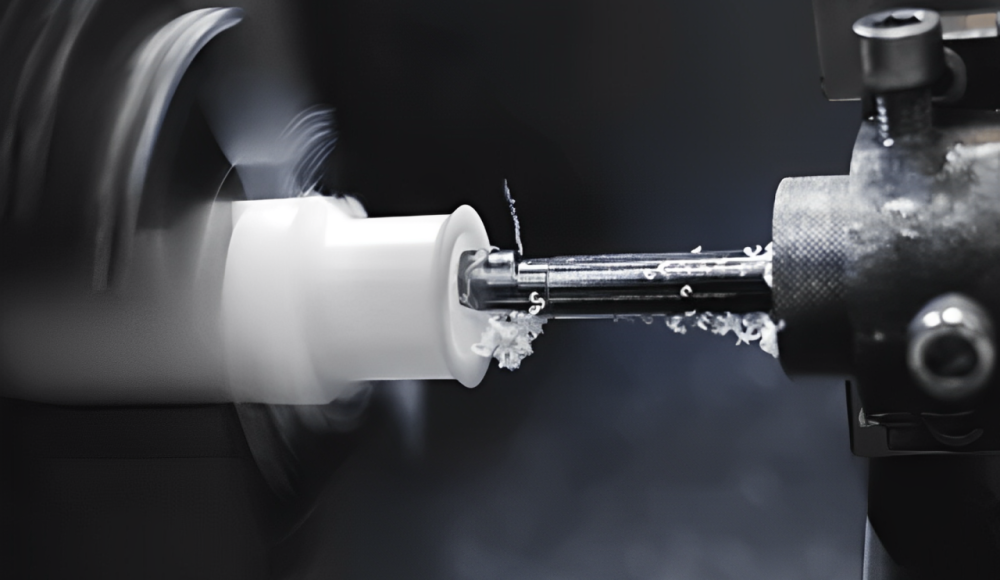
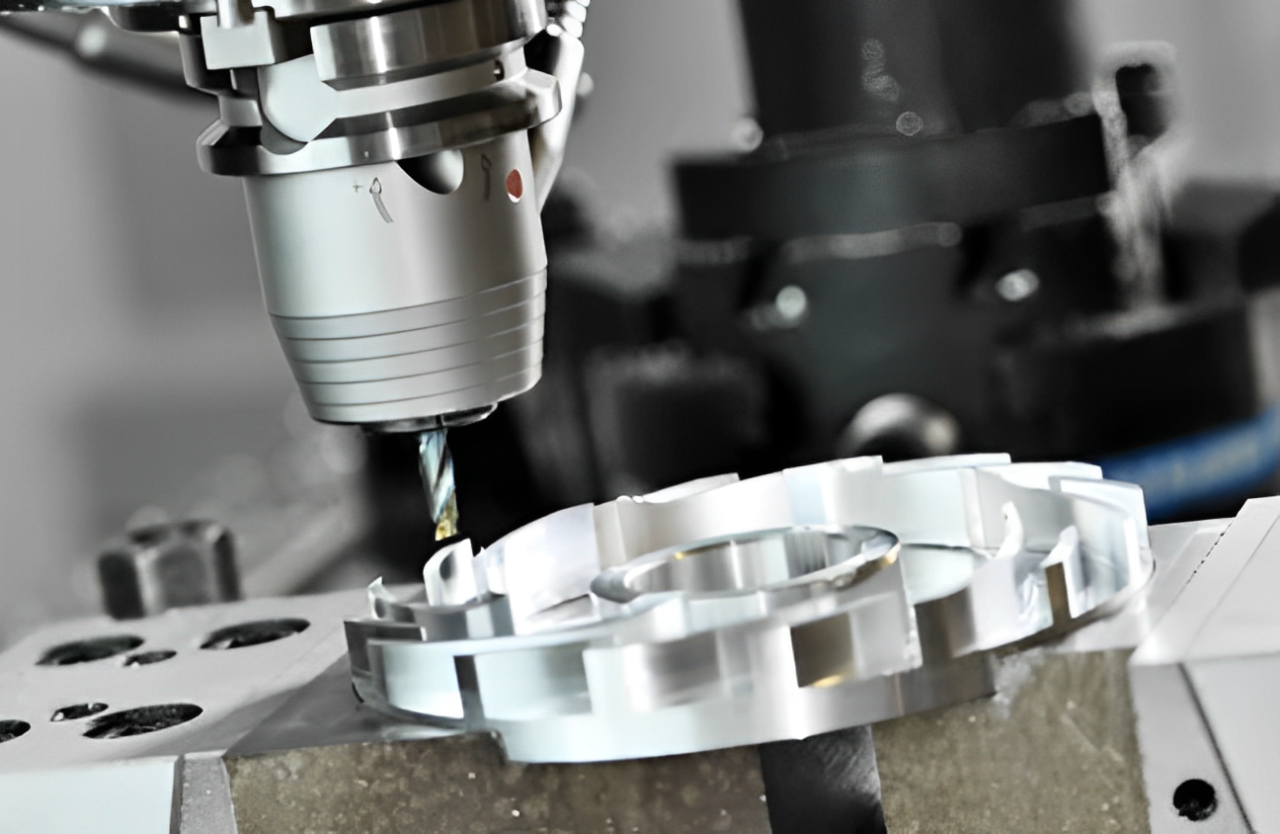
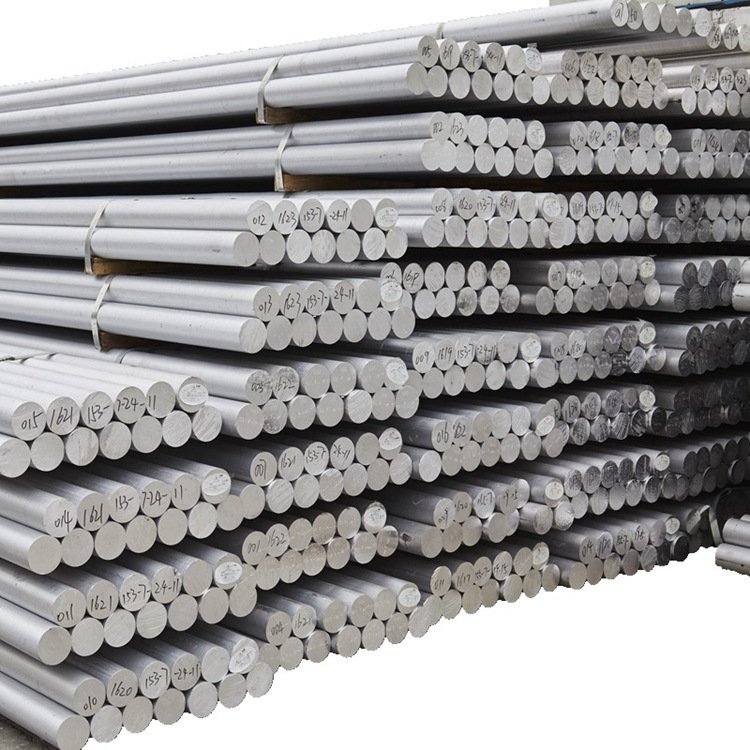
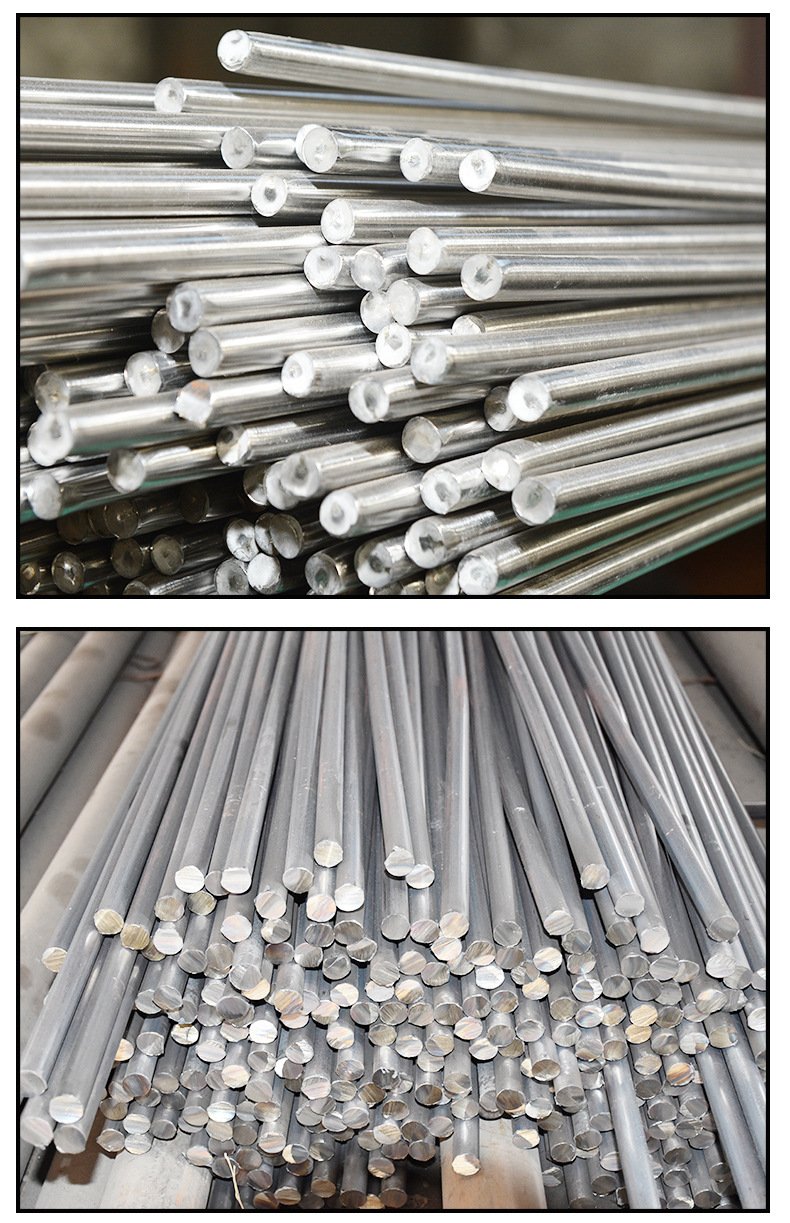
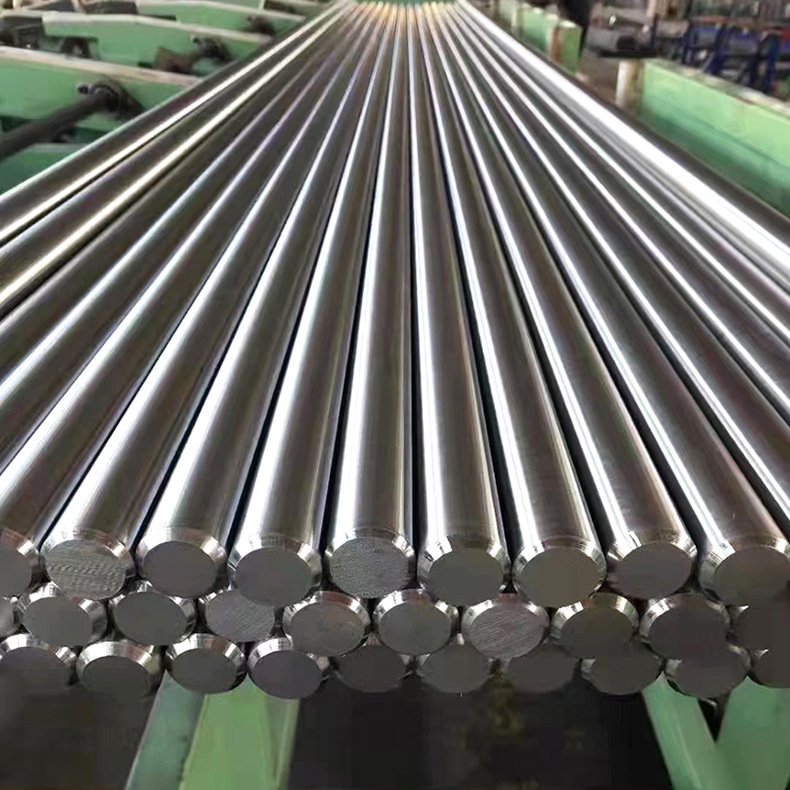
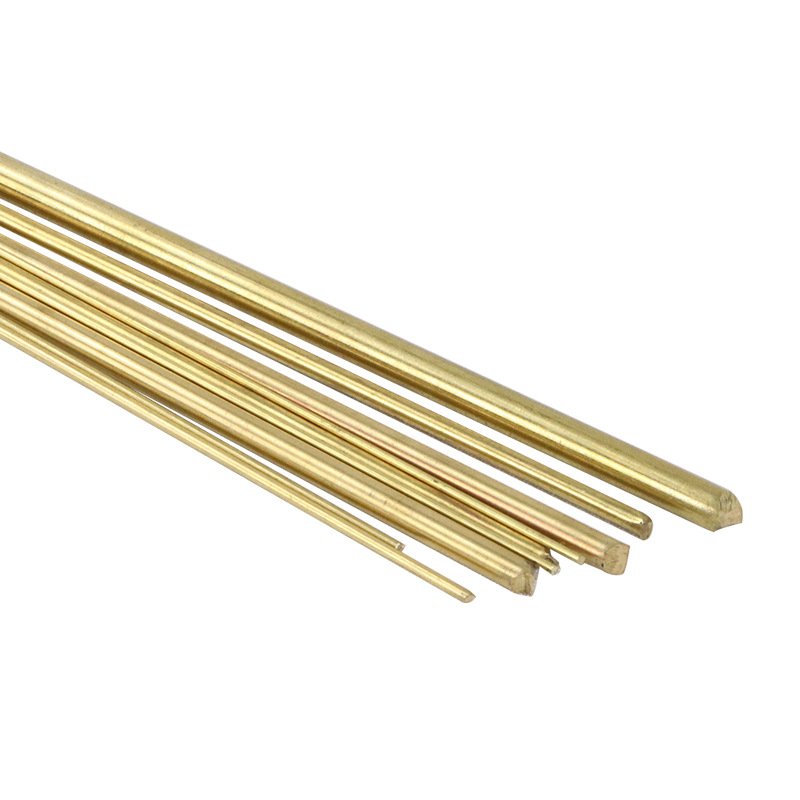
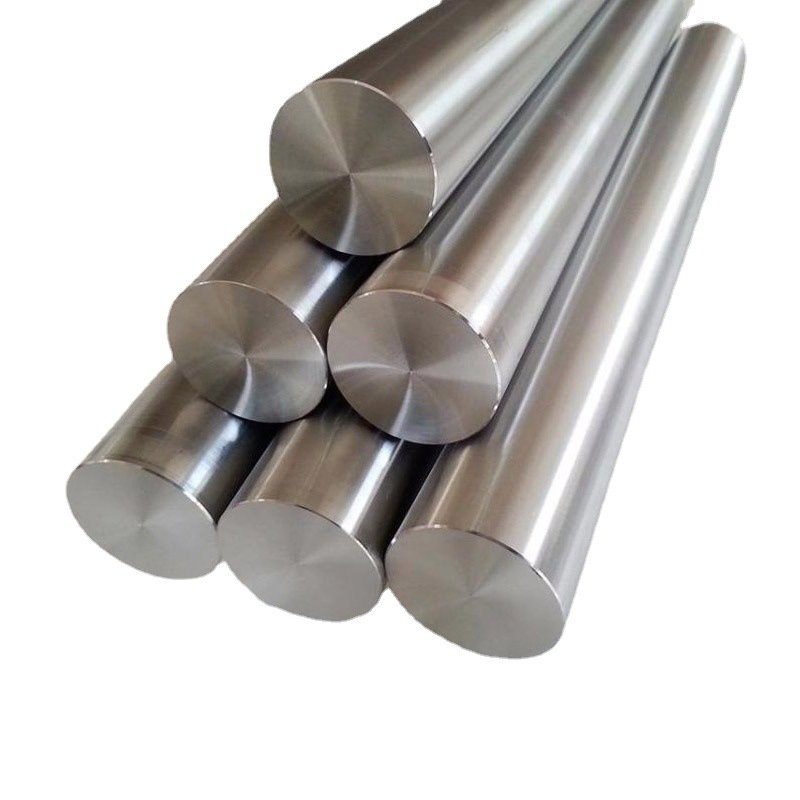
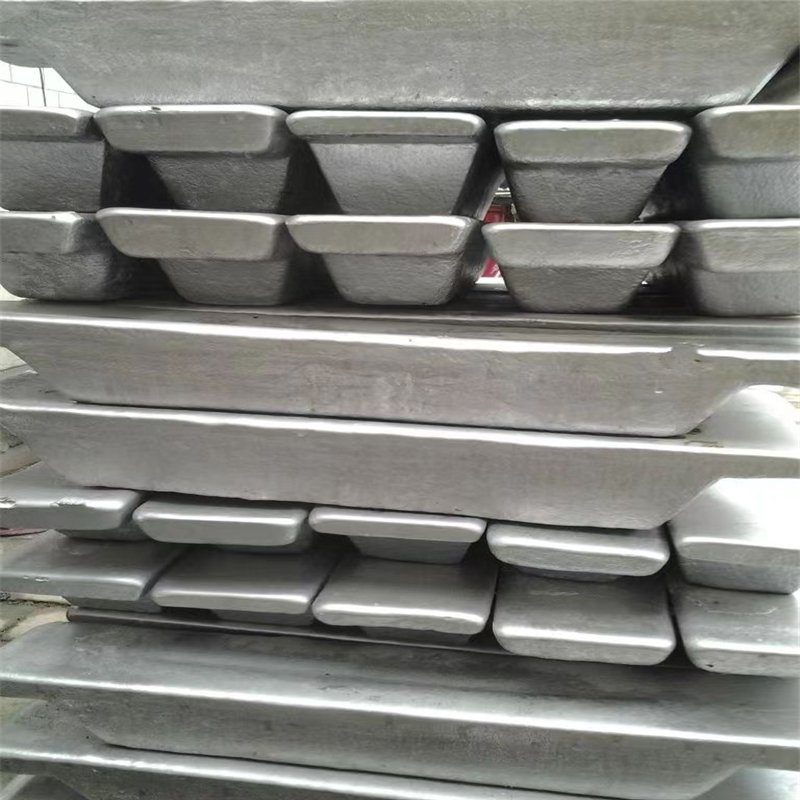
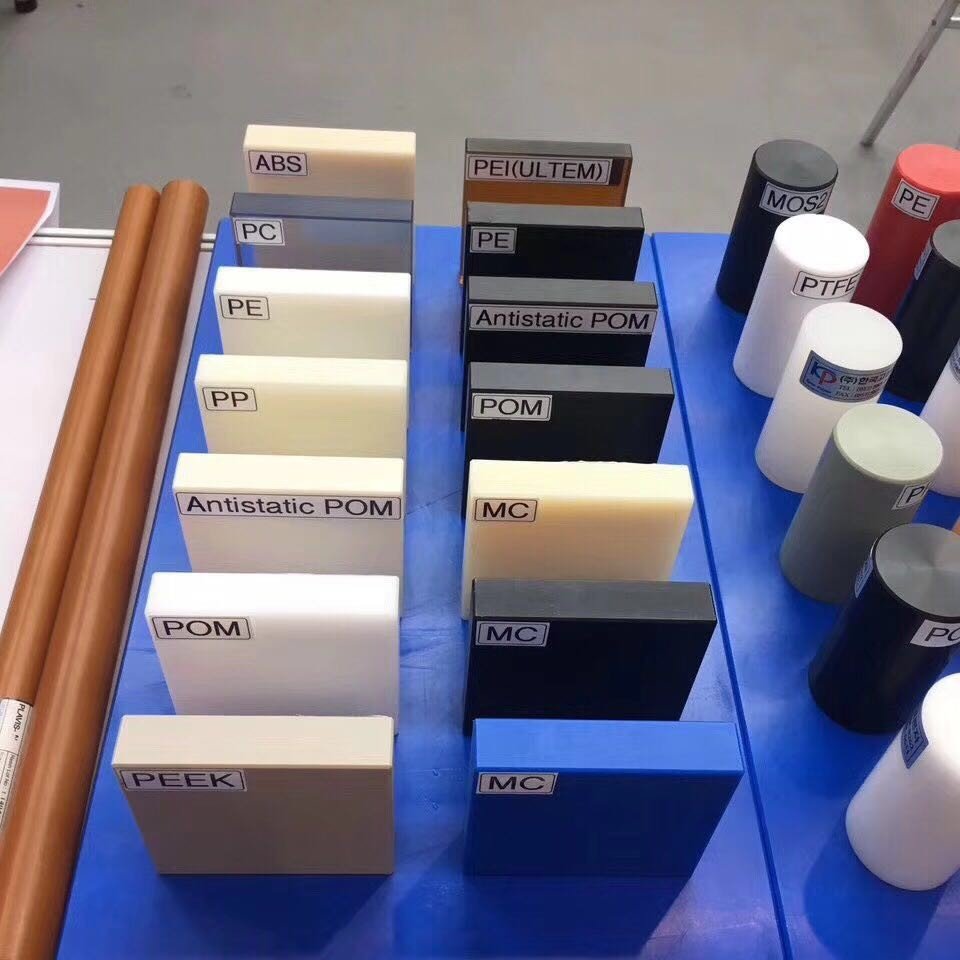


1 pensamiento en “Materiales de mecanizado CNC, Todo lo que necesitas saber”